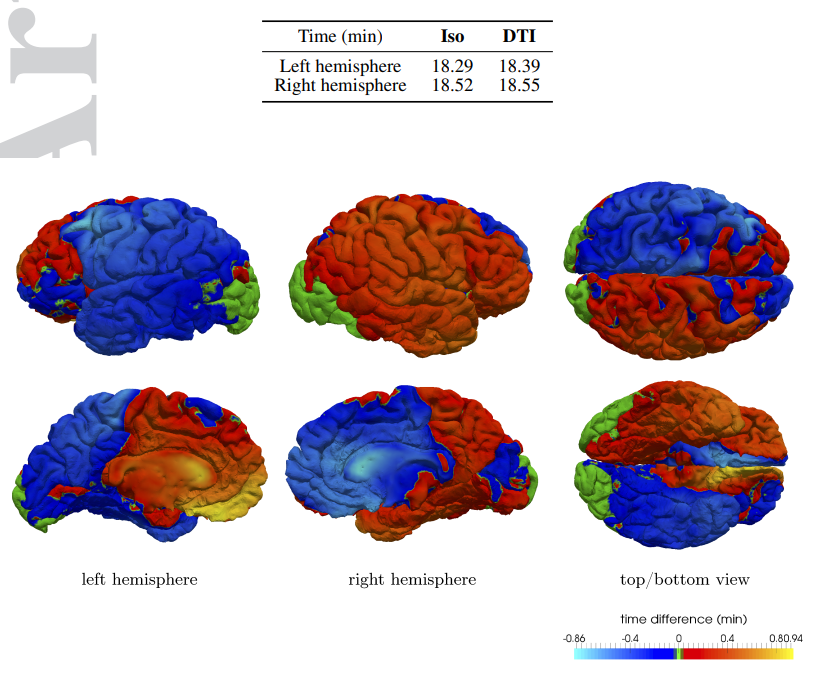JM Kroos, I Marinelli, I Diez, JM Cortes, S Stramaglia, and L Gerardo-Giorda. Patient-specific computational modeling of Cortical Spreading Depression via Diffusion Tensor Imaging. International Journal for Numerical Methods in Biomedical Engineering, 2017 [pdf]
Cortical spreading depression, a depolarization wave originating in the visual cortex and traveling towards the frontal lobe, is commonly accepted as a correlate of migraine visual aura. As of today, little is known about the mechanisms that can trigger or stop such phenomenon. However, the complex and highly individual characteristics of the brain cortex suggest that the geometry might have a significant impact in supporting or contrasting the propagation of cortical spreading depression. Accurate patient-specific computational models are fundamental to cope with the high variability in cortical geometries among individuals, but also with the conduction anisotropy induced in a given cortex by the complex neuronal organisation in the grey matter. In this paper, we integrate a distributed model for extracellular potassium concentration with patient-specific diffusivity tensors derived locally from diffusion tensor imaging data.





